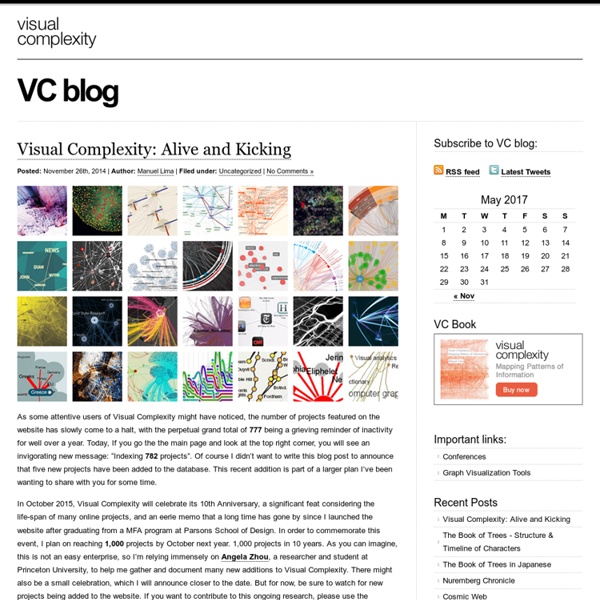Linked Data | Linked Data - Connect Distributed Data across the
writing
And speaking of height… Another wonderful example, more powerful as words than as an image: Jan Pen, a Dutch economist who died last year, came up with a striking way to picture inequality. Imagine people’s height being proportional to their income, so that someone with an average income is of average height. Now imagine that the entire adult population of America is walking past you in a single hour, in ascending order of income.The first passers-by, the owners of loss-making businesses, are invisible: their heads are below ground. (From The Economist, by way of Eva) Come work with us in Boston Fathom Information Design is looking for developers and designers. We’re looking for people to join us at Fathom. Developer – Looking for someone with a strong background in Java, and some C/C++ as well. At the moment, we’re only looking for people located in (or willing to relocate to) the Boston area. Minnesota, meet Physics And another version from a local FOX affiliate in Minnesota: Of note: Halo?
Linked Data for Libraries
Linked Data and bibliographic metadata models © PhOtOnQuAnTiQuE Some time after I wrote “UMR – Unified Metadata Resources“, I came across Chris Keene’s post “Linked data & RDF : draft notes for comment“, “just a list of links and notes” about Linked Data, RDF and the Semantic Web, put together to start collecting information about “a topic that will greatly impact on the Library / Information management world“. While reading this post and working my way through the links on that page, I started realising that Linked Data is exactly what I tried to describe as One single web page as the single identifier of every book, author or subject. The concept of Linked Data was described by Tim Berners Lee, the inventor of the World Wide Web. There are several definitions of Linked Data on the web, but here is my attempt to give a simple definition of it (loosely based on the definition in Structured Dynamics’ Linked Data FAQ): Examples: a book (subject) is written by (predicate) a person (object)
interfaces: visualisation de données.
Le traitement et la compréhension d'innombrables flux d'information est un des défis cruciaux posés par l'Internet et les bases de données. La gestion graphique et l'affichage des informations est une préoccupation croissante des métiers du web, du graphisme numérique et des développeurs. On pourra parler ici de "Design de l'information" : hiérarchiser, donner à voir, et surtout accéder à l'information. Un accès intelligent à cette montagne d'infos souvent abstraites se fera désormais par l'intermédiaire d'un outil numérique intégré : un moteur de recherche associé à une interface de visualisation. Historiquement, la cartographie est la vénérable ancêtre de la visualisation de données : montrer non pas ce que l'on voit, mais bien ce que l'on peut déduire de mesures et des calculs. Les technologies numériques ont accru la flexibilité et l'instabilité du texte (dans ses diverses composantes : typographie, livre, construction narrative), et de nombreuses oeuvres explorent ce phénomène. Liens.
How Data Will Impact the Future of Healthcare (Infographic)
IBM staff storyteller Chris Luongo has created a great infographic explaining the different ways that healthcare could become data driven in the future. The IBM Smarter Planet blog calls it Smarter Healthcare. We've embedded the infographic below in Microsoft's new web page viewer Zoom.it. Photo by Jeffrey Gluck The data mining part of this story is one of the most interesting to me. As one online resource has explained: Medical (or clinical) databases have accumulated large amounts of data on patients and their medical conditions. Where there is data, there is opportunity for analysis and building added value. See also: How Location Services Could Impact Healthcare
When Informative Art Isn’t
Making visualization more aesthetically pleasing is certainly an important goal. Another one is to make visualization a part of our everyday lives. Ambient information displays are a way of doing both, and they are often inspired by pieces of art. But what if the viewers think they are just looking at a picture, and don’t realize that it presents information to them? In a 2003 paper titled Between Aesthetics and Utility: Designing Ambient Information Visualizations, Skog, Ljungblad, and Holmquist described a way of visualizing data using a visual metaphor that looked very much like a Mondrian painting: large, colored squares with thick, black, orthogonal lines on a white background. This version was already an improved one that added a considerable amount of metaphor to make it easier to understand which buses were going in which direction. So what went wrong? The image above shows a visualization of temperatures in six cities throughout the world, and of email traffic.
Visual.ly Raises $2 Million To Make Even More Infographics
Visual.ly, the team built from the infographics team behind Mint’s spectacular infographics, has raised $2 million in seed funding, led by Crosslink Capital, SoftTech and 500 Startups as well as angels Kapor Capital, Giza Ventures, Naval Ravikant, Mark Goines, Josh James and others. According to its financing release, Visual.ly has had 26K users sign up to be a part its beta (coming soon), over 300K infographics created, received over one million pageviews monthly to its website and has doubled the number of indexed infographics it hosts since it demoed in April. Pre-beta launch the company has already partnered up with media companies like The Atlantic, BuzzFeed, AskMen, CNNMoney, GOOD, The Economist, NASDAQ, Skype, National Geographic, Wall Street Journal to provide their infographics and data visualizations solutions. “We are defining a new space — allowing users to create sexy, high impact data visualizations,” says co-founder Stew Langille.



